Last updated on 2/5/24 | First published on 3/10/19 | Literature review current through Nov. 2025
[cite]
Authors:
Damarissa Fe Nychay ,
Topic editors:
Erin M. Tharalson DNP, RN, ANP-BC, CWS ,
Elaine Horibe Song MD, PhD, MBA,
more...
Coauthor(s)
Damarissa Fe Nychay,
Disclosures: Nothing to disclose
Editors
Elaine Horibe Song, MD, PhD, MBACo-Founder and Editor, Wound Reference, Inc;
Professor (Affiliate), Division of Plastic Surgery, Federal University of Sao Paulo;
Volunteer, Association for the Advancement of Wound Care;
Google Scholar Profile
Disclosures: Nothing to disclose
Erin M. Tharalson, DNP, RN, ANP-BC, CWS
Disclosures: Nothing to disclose
For full access to this topic and more
premium content, upgrade today. Or get started with a Free Basic account (limited content and tools).
Summary
A diabetic foot ulcer is a wound or opening in the skin anywhere on the foot (including toes) of a person with diabetes mellitus (that is, with too much sugar in the blood). Diabetic foot ulcers are serious and can lead to more health problems if not cared for properly. Two out of three leg amputations in the United States happen because of diabetic foot ulcers.
Diabetic foot ulcers can come back again even after they have healed. But, there are ways to stop diabetic foot ulcers from happening in the first place. It's important to take care of your feet even after the ulcers are gone to make sure they do not come back.
The information below can help you take care of your feet every day. It tells you how to wear shoes and socks that are good for your feet and how to take care of your feet if you have diabetes. By doing following these instructions, you can keep your feet healthy and prevent diabetic foot ulcers that can be hard to heal.
Patient Education Handout (download)
|
Common Foot Problems Among People with Diabetes
Foot problems can lead to diabetic foot ulcers. Common foot problems are shown below:
| Picture | Foot Problem | What it is |
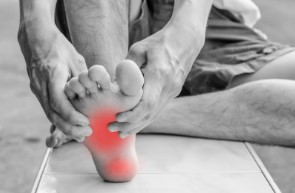 | Neuropathy | Feet feel numb or burn or tingle |
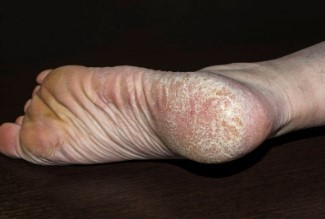 | Callus/ Corn | Thickened dry skin in areas of pressure (heels, bottom of feet) |
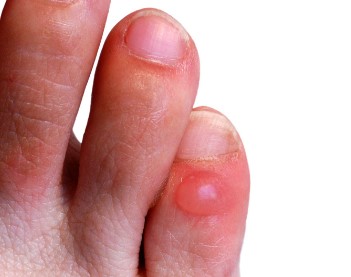 | Blister | Fluid filled wound, usually from shoes rubbing (Do not pop) |
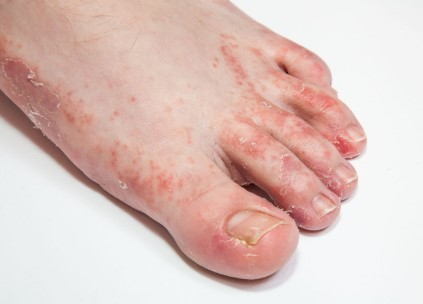 | Athlete's Foot | Itchy and odorous fungal infection usually between toes |
Recommended Daily Foot Care to Prevent Diabetic Foot Ulcers
| Steps | Description |
Step 1: Inspect your feet 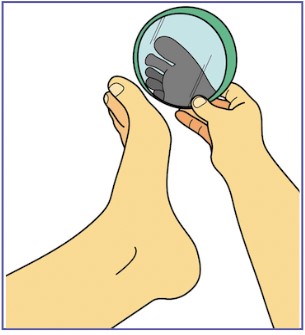
| Check the top, bottom, sides, and between toes. Look for cuts, blisters, redness, and nail changes. Use a mirror if you have trouble seeing your feet or bending over
|
Step 2: Wash your feet every day 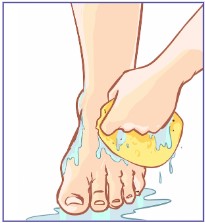
| Wash your feet and toes with lukewarm water and soap. Test the water temperature with your elbow.
|
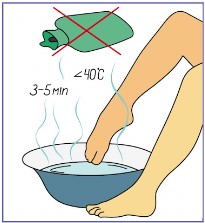
| *Avoid soaking your feet and using hot water, this can lead to skin dryness or cause a burn |
Step 3: Dry your feet completely 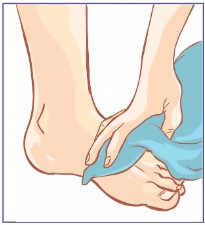
| Dry your feet completely. Gently pat dry with a clean towel and be sure to dry between the toes.
|
Step 4: Moisturize your feet 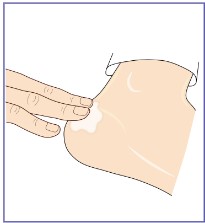
| Apply a thin coat of lotion but NOT between the toes which can cause a fungal infection. |
Shoe and Sock Use Guide for People with Diabetes
| Comments |
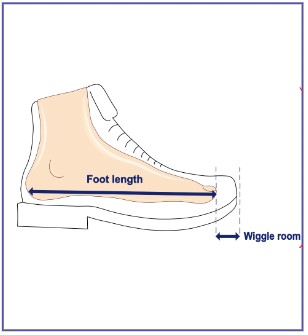
| There should be 0.5-0.7 inches (1-2 cm) of space between the longest toe and the end of the shoe
|
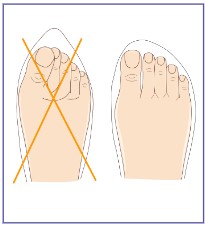
| Shape of the shoe should resemble the shape of the foot. Front of shoe should be wide so toes easily wiggle and have space.
|
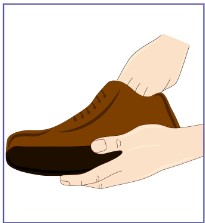
| Shake out your shoes and feel the inside of the shoe for any objects or bumps that may bother the skin.
|
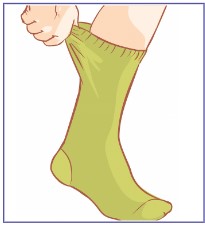
| Wear clean, dry cotton socks with shoes. Change them if they get wet or full of sweat. Never walk barefoot or with socks only. Always wear shoes or slippers |
Purchasing shoes and socks
- Avoid thong sandals, flip-flops, pointed toe and open-toe shoes and high heels.
- Buy shoes late in the day when feet are their largest for a proper fit.
- Consider buying socks and shoes made specifically for patients with diabetes.
Nail and Callus Care
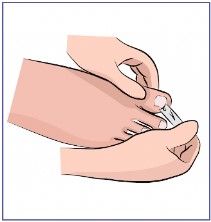
| - Cut nails carefully. Cut them straight across and file the edges. Don’t cut nails too short, as this could lead to ingrown toenails.
- Do not remove or trim ingrown toenails or thick toenails. See a health care provider for management.
- Never treat and cut corns or calluses yourself. Callus removal products and pumice stones may help but check with your health care provider first.
|
Diabetes Care for Healthy Feet

| Move more. Regular exercise for 10-15 minutes a day can help keep your blood sugar levels on track.
|

| Don’t smoke. Smoking decreases the blood circulation to the feet.
|

| Follow your diabetes meal plan. Ask your doctor or dietitian for help if you’re having trouble sticking to it.
|

| Check your blood sugar as directed by your doctor. Check more often if you’re sick or if you’re concerned about high or low blood sugar.
|

| Take medicine as instructed. If your blood sugar is often high, your doctor may change how much medicine you take or when you take it.
|
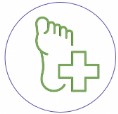
| See your primary care provider or podiatrist (foot doctor) for a yearly foot evaluation.
|
Official reprint from WoundReference® woundreference.com ©2025 Wound Reference, Inc. All Rights Reserved
Use of WoundReference is subject to the
Subscription and License Agreement.
NOTE: This is a controlled document. This document is not a substitute for proper training, experience, and exercising of professional judgment. While every effort has been made to ensure the accuracy of the contents, neither the authors nor the Wound Reference, Inc. give any guarantee as to the accuracy of the information contained in them nor accept any liability, with respect to loss, damage, injury or expense arising from any such errors or omissions in the contents of the work.